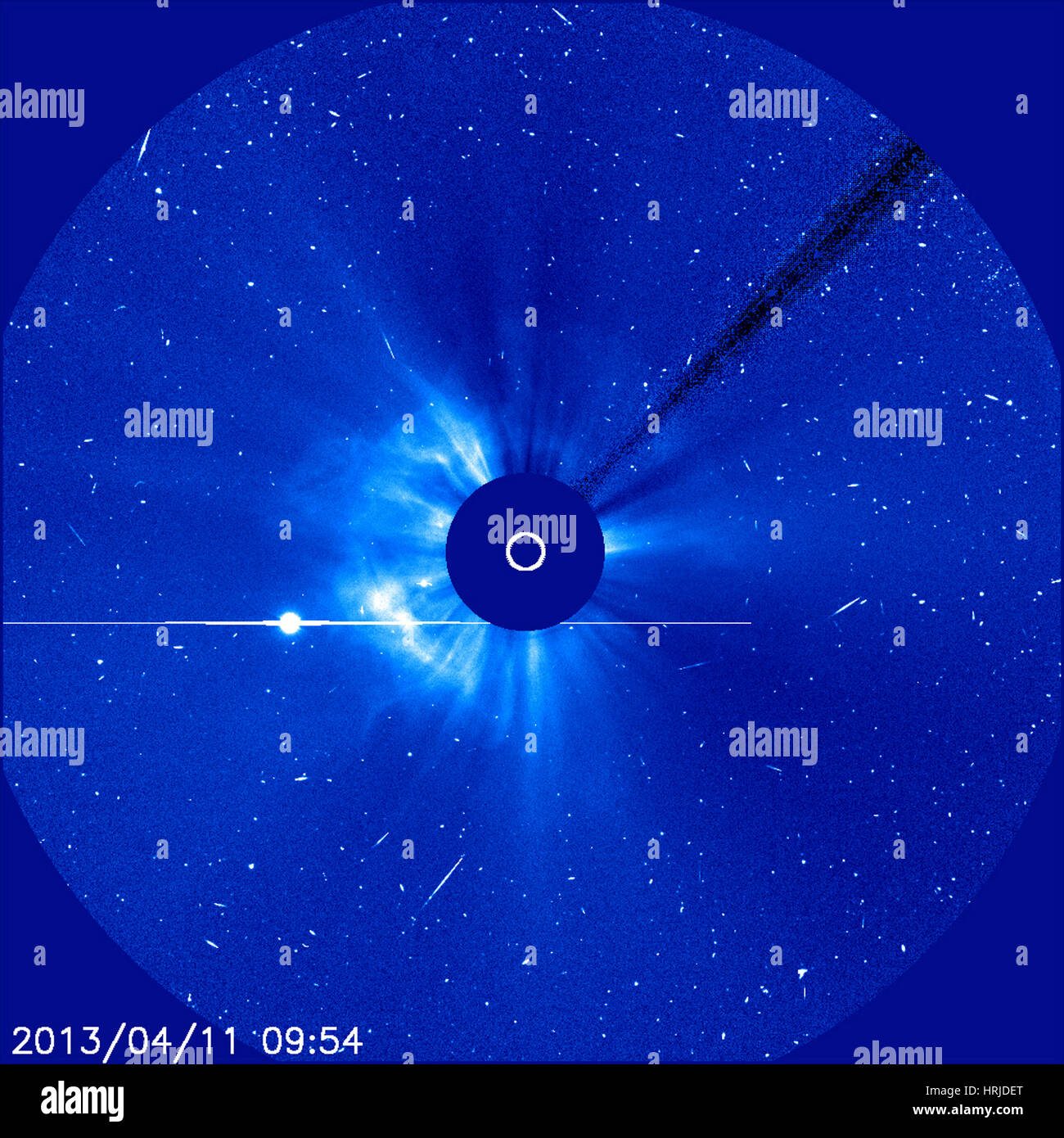Sun, LASCO Image, 2013

Image details
Contributor:
Science History Images / Alamy Stock PhotoImage ID:
HRJDETFile size:
37.1 MB (2 MB Compressed download)Releases:
Model - no | Property - noDo I need a release?Dimensions:
3600 x 3600 px | 30.5 x 30.5 cm | 12 x 12 inches | 300dpiPhotographer:
Photo ResearchersMore information:
This image could have imperfections as it’s either historical or reportage.
SOHO captured this coronagraphic image on April 11, 2013 of a CME as it moves further out into the heliosphere. SOHO captured the action with its C2 coronagraph, in which the sun is blocked out (by the circular occulting disk in the center of the image) to reveal the faint structures in the corona. The white circle represents the size of the Sun. The Sun is the star at the center of the Solar System. It is almost perfectly spherical and consists of hot plasma interwoven with magnetic fields. The Sun is classified as a G-type main-sequence star (G2V) based on spectral class and it is informally designated as a yellow dwarf because its visible radiation is most intense in the yellow-green portion of the spectrum, and although it is actually white in color, from the surface of the Earth it may appear yellow because of atmospheric scattering of blue light. A coronal mass ejection (CME) is a massive burst of solar wind and magnetic fields rising above the solar corona or being released into space. Coronal mass ejections are often associated with other forms of solar activity, most notably solar flares, but a causal relationship has not been established. Most ejections originate from active regions on the Sun's surface, such as groupings of sunspots associated with frequent flares. Near solar maxima, the Sun produces about three CMEs every day, whereas near solar minima, there is about one CME every five days